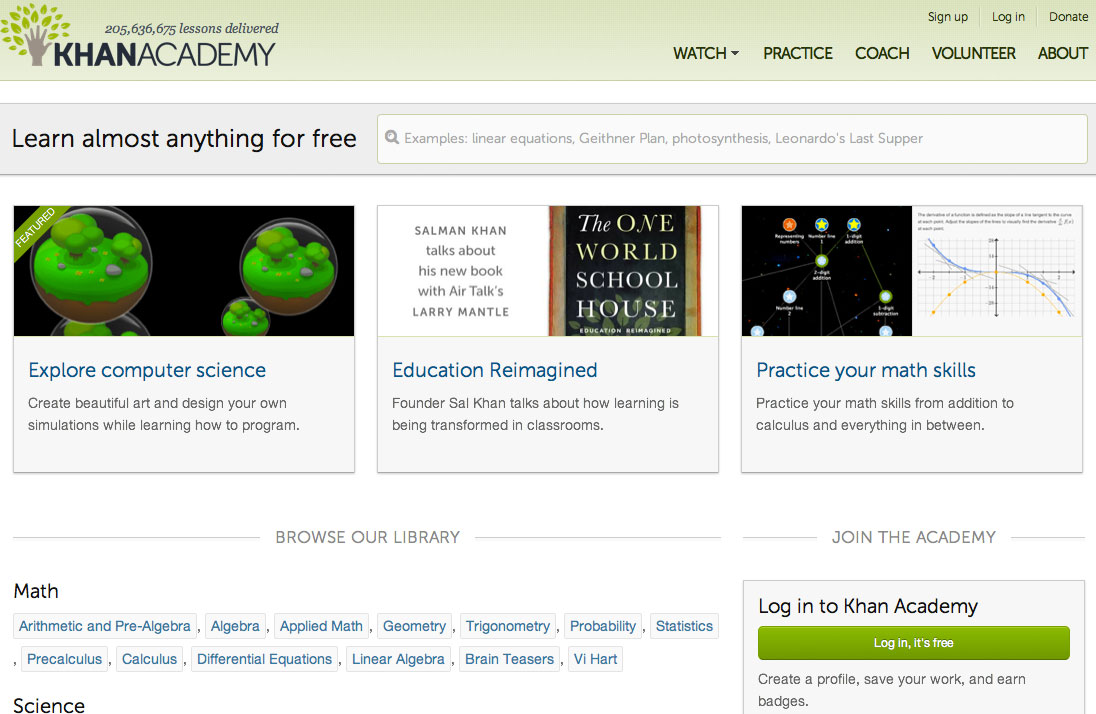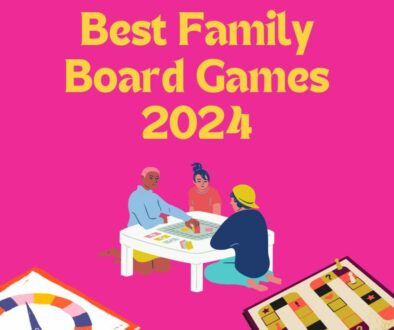Khan Academy and What it Means for Education
Contrary to what Salman Khan originally thought, when he first started working on building content for the now famous Khan Academy, and trying to fund it’s survival, he has actually made it to Forbes without the profit-driven orientation, typical of most Forbes subjects and coverage. Congratulations, Mr Khan!
In this very constructive and optimistic article, by Michael Noer, Khan comes close to being hailed as the next best thing for the so-called flagging (typically defined by the poor performances of OECD PISA tests) education systems of the West, particularly that of the USA. But is Khan Academy all that it is made out to be?
 What is Khan Academy?
What is Khan Academy?

In case you haven’t heard, Khan Academy is an online collection of over 3500 videos teaching a range of topics (Maths, Science, Computer Science, Finance and Economics, Humanities with a Test Prep area) in a very plain, very simple setup. In most of the videos, Khan himself, screen captures a black screen and writes with neon ‘ink’ while narrating an explanation.
Why Khan Academy offers nothing new…
Taking this at face value, Khan’s videos are in reality, a very low-tech solution in a world of high-tech gadgetry and functionality. The method in which Khan’s lessons are delivered are in actual fact, no different to that of a teacher with a slate and a piece of chalk.
To be bluntly critical of it, the videos on Khan Academy do not actually offer any more than a good tutor would with a pen and paper. The approach is still very much ‘top-down’ learning, in which one person ‘owns’ the knowledge and chooses to impart or share it with the community.
In terms of interactive and active learning, which most educators believe to be the most effective form of learning, watching videos that consist completely of learning material, rates fairly low down on learning effectiveness.
The Power of Khan Academy
The power of Khan’s material though, lies in the very fact that they are videos, accessible by anyone with a fast enough Internet connection and an interest to learn a particular topic (key point here – self-motivation).
The teaching premise of the videos can be on a one-to-one, or one-to-many (i.e. screened in a classroom) basis. One-to-one is the typical in which we envisage a learner in front of a video on a device. However, imagine the scenario if a class in a school did not have a teacher with the relevant skills or knowledge in a particular subject, presumably then the teaching could effectively be ‘out-sourced’ to videos.
While I’m not saying that this is what should happen and by no means am I proposing this to be the way in which schools make use of technology, it is a potential scenario.
Going back to the power of video. The greatest strength of Khan’s videos is in the ability for an individual user to ‘personalise’ the speed at which he can learn.
Being able to click on the pause button and to scrub (scroll back and forth), thereby reengaging with material that was ‘not quite so clear’ the first time round, allows each user to dictate the clarity and thereby effectiveness of each lesson. (Imagine having a remote control in a classroom, with a dedicated teacher, who could repeat, infinitely and patiently, a concept that was missed)
Converting Videos to Active Learning – Flipping Classes
A relatively new way for videos such as Khan’s to be used effectively in the formal teaching and learning environment of schools has been to ‘flip the class’.
Briefly explained, this consists of setting the viewing of the video as homework and then, approaching, what would typically be set as homework, in class. So in the case of learning Algebra, the student is sent home to watch the video, and back in class the next day, they set to work on the exercises, as the teacher is on hand to help and guide through problems and queries.
This, of course, is just one way to make use of Khan Academy’s learning content.
Is Khan Academy really the beginning of the Learning Revolution?
Critics and naysayers are understandably skeptical about the teaching and learning ability of Khan Academy. Commonplace comparisons have been made with the then ground-breaking, new technologies of radio and TV. Neither of which was believed to have made an impact on the teaching and learning industry as a whole.
But, if we stop to think for a minute and consider if the impact of these ‘new’-media, (TV, radios) on society’s progress, we would realise that there were far-reaching consequences on education even if they were not directly measurable.
I, for one, learnt a huge amount of Science from 3-2-1-Contact and so impressed was I by MacGyver that I attempted a number of his ‘home science’ experiments. Both these programmes, in no small way contributed to my passion for Science.
Equally, I am sure, just as many were inspired by James Herriot’s vet stories when his books were first published in the early 1950s before TV ownership was as commonplace.

Why “Effectiveness Comparisons” of Teaching with Technology Don’t and Won’t Work
The point we all miss, when we try to qualify whether a ‘new’ technology is effective in imparting knowledge, is that we always, ALWAYS return to traditional means of quantifying learning, of measuring achievement.
Tests and exams are still the only way in which schools judge an acceptable standard. Whether you score an A or an F, is the determining factor as to whether you’re ‘clever’.
In the end though, Khan Academy works well to this aim. The videos in themselves, work to sole purpose of scoring well in exams. In fact, there is actually a sub-section for Test Prep in the list of Khan Academy videos.
What This Means to Teachers…
So, if Khan Academy is able to more effectively do what teachers have been trying to do for decades – to get better test scores, to improve scholastic achievement where does that leave the teachers?
The way I see it, there will always be a need for teachers.
In the Early Years (Nursery, Kindergarten, Junior School) education, the basic skills of letter and number recognition, writing, reading skills and basic math skills will without a doubt, be immensely better taught in person than by a screen. That’s not to say that it can’t be learnt from a screen, just that young children would benefit more greatly from human interaction.
In the later Primary Years (Middle School) and Secondary Years (High School), while continuing to build on basic skills, teachers will however need to move towards a culture where the underlying message is that ‘Knowledge is out there’ and the skills to build and develop will need to consist of being able to sifting through accurate and inaccurate information. To try to teach the ability to judge the validity of information, and ultimately to realise that the thing that separates information handling between a child and their teacher boils down to just one core fact – experience.
Khan himself proposes that teachers are vital in gauging individual achievement on a continuous basis.
Why Khan Academy Works
The key, it seems, to Khan Academy’s success is that it puts the onus on the learner to learn. Whatever the drivers to the knowledge may be, whether it is for exams, parental or peer pressure or even just for fun, sitting down in front of a screen and watching a video, puts the learner in the drivers seat.
It is this motivation that is generally lacking in schools around the Western world and quite possibly why Khan Academy has taken off in a big way- the impression that I’m learning because ‘I want to’, as opposed to because ‘I have to’.
In the end,
…in this age of technology, the key to a learned society will no longer be in the knowledge each individual holds, but in each person’s ability to source, evaluate and qualify the information.
I believe that this is ultimately, what all our education systems need to work towards.
Khan Academy is just the beginning.
Author: Li-ling, tweets as DrOoi and is passionate about all things learning.
Forbes Cover Image Property of Forbes.
To make sure you continue to receive interesting exciting articles at the forefront of learning with technology, remember subscribe to our updates below and follow @ColorMyLearning on Twitter and Like us on Facebook.
You will benefit from a newsletter updates straight to your mailbox from ColourMyLearning on the use of Technology for Teaching and Learning.
Don’t forget to rate the article.




